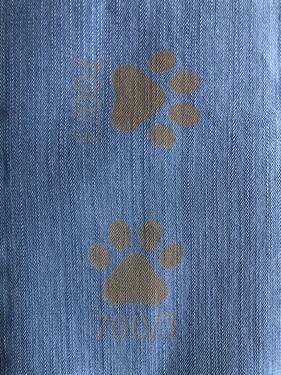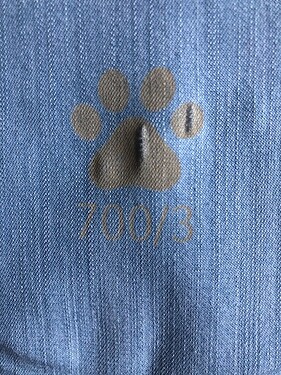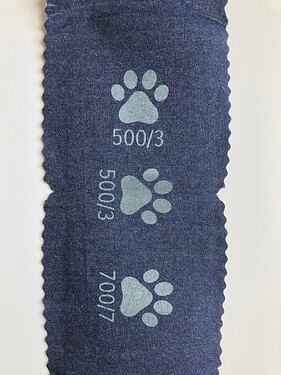I know there are already topics that address fabric but I feel this topic is unique and merits its own thread.
Sew…aside from jeans and t-shirts, everything I wear is self made. Which leads to a lot of scraps. I started this topic to post the results of fabric scraps I glowforge and also provide the link for the fabric which will tell the details on it and might be helpful for others. I will add more as I acquire more scraps and anyone else is certainly able to post as well (ideally please post the link or specs of the fabric as well).
So to start, I use fusible interfacing on all my glowforged fabrics. Because…it’s not like the glowforge makes the fabric stronger…
Also, I have seen people ask about ways to secure the fabric in the glowforge with magnets or sticky mats. I use an embroidery hoop because it is adjustable, holds the fabric nice and tight, and using bright colored loops is helpful in knowing where your fabric is when you have a dark fabric that blends in with the crumb tray.
So here is the first batch of glowforged scraps. Settings are listed as (speed/power). LPI for them was 225 and passes was 1:
Fabric: Linen
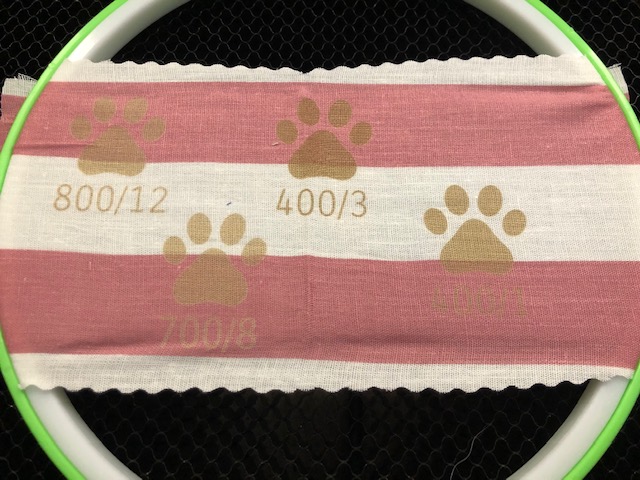
For this fabric it has a low thread count and so if the interfacing was not on it then there would not be much of fabric left. What you are seeing in the image is more of the linen being burned into the interfacing
https://www.joann.com/lyocell-linen-rosette-ivy-stripe-fabric/17024399.html
Fabric: Crushed Satin

For this fabric it also had a lower thread count (not as low as the linen above). The settings I recommend most is the 700/2 because although it looks the dullest in the photo, it does still stand out a lot when the fabric is as an angle because the fabric is shinny yet the engraving part is matte. Below is what the satin looked like on the back side and you can see how much went through to the interfacing.

https://www.joann.com/casa-collection-galleria-crushed-satin-fabric/zprd_17939935a.html
Fabric: Medium Weight 100% Cotton
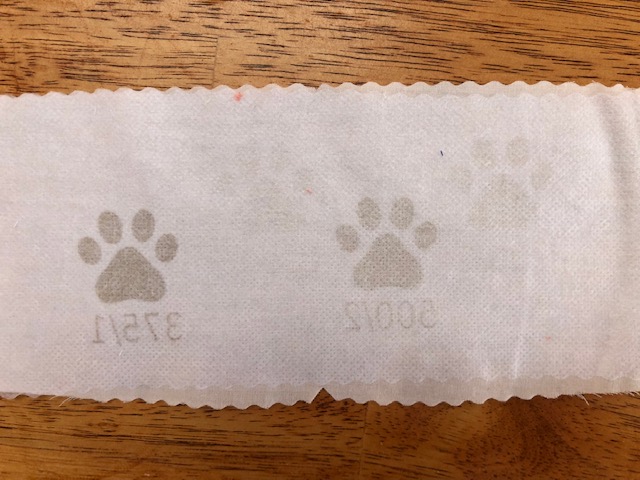
As you can see, the 700/2 and 1000/5 showed up pretty well but also did not bleed too much into the interfacing.
https://www.joann.com/sew-classic-solid-cotton-fabric/zprd_17020546a.html
Fabric: Denim (Lyocell and Rayon blend)

So with this one I want to stop and address the grainline. I am not going to go into what the grainline is (google has way better pictures and explanations) but here is the results of the engraved fabric when I pulled it in the direction of the grainline:
The engraving held up just fine. But here is when I pull in the opposite direction (along the cross grain):
As you can see, it did not hold up as well. This is just good to keep in mind when it comes to placement of the design. I would not place it in a spot that would experience a lot of pull on the cross grain direction.
https://www.joann.com/lyocell-denim-fabric-light-wash/17024167.html
Fabric: 4oz Denim
This one held up well even with pulling. That has more to do with the weave pattern for this material.
https://www.joann.com/sew-classic-bottomweight-4-oz-dark-wash-denim-fabric/11771631.html
I will update the main topic when I have another batch of scraps to add. I am thinking the next set will be more knits or start getting into upholstery and sailcloth.
Feel free to add your results and make sure and always know your materials before you put them in the glowforge. 

